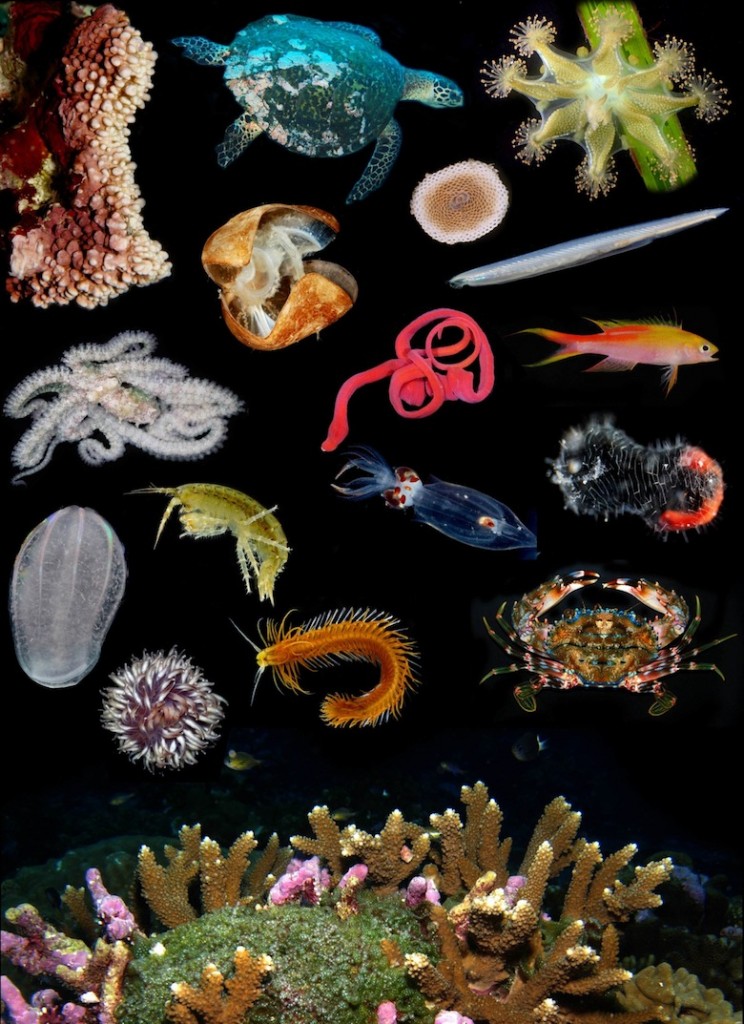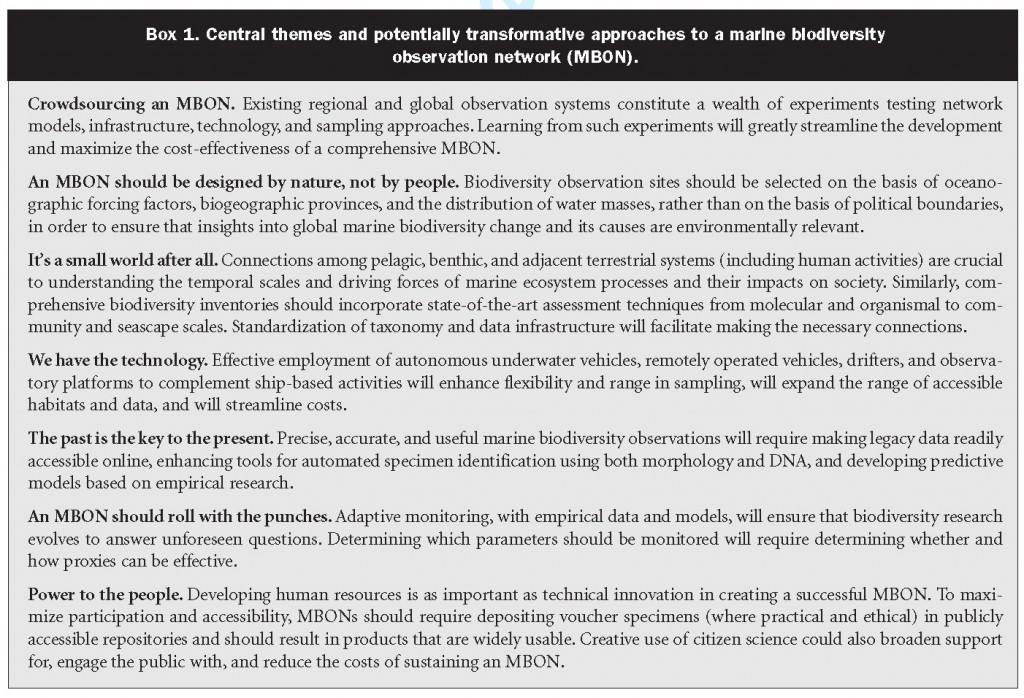
We tend to keep track of things we think are important—blood pressure, how many calories are in that muffin, hurricane tracks, stock prices, celebrity rehab details.
But sometime we don’t know what’s important until it’s too late, and that ignorance can come back to bite us. Hence the annual physical exams that are standard in most health-care packages. We don’t want a problem to sneak up on us.
Case in point: The World Ocean. Who’s minding the shop? We increasingly hear bad news about overfishing, climate change, acidification, and so on. For example, John has recently done a nice summary of the evidence for climate change effects on marine communities in his a series of posts on SeaMonster.
But more generally, how do we know whether the ocean has changed, by how much, and and how fast? We depend on ocean life for food, livelihoods, protection from storms, and half the oxygen we breathe—no matter how far inland we live. And we know the ocean is sick and getting sicker. Shouldn’t we at least have a finger on the pulse, so to speak, so we can figure out what’s ailing it and how to fix it? Shouldn’t we have a comprehensive health-care plan for the ocean?
Remarkably, we don’t. A couple years ago a group of us got together at the request of several federal agencies to discuss ideas and an implementation plan for a Marine Biodiversity Observation Network, which is a fancy phrase for regular check-ups to keep sea life healthy. The fruit of our labors has just been published in the new issue of BioScience, where we argue for establishing a national network to monitor ocean life as a key bellwether of both ocean and human health.
We argue that a comprehensive marine biodiversity observation network could be established with modest funding within five years. It should monitor biodiversity at all levels, from genes to regional ecosystems. It should also link data and observations of biodiversity to the physical factors controlling sea life like water temperature and water quality, and be flexible enough to detect and track emerging problems, invasive species, and so on as environmental conditions change.
It’s important that an observing network for marine biodiversity should be “designed by nature, not people”. The locations of the network’s sites should be based on where the organisms live, and on factors like water temperature and currents, rather than on political boundaries. That will ensure that insights into biodiversity change and its causes are environmentally relevant.
We envision a network with sites along both the East and West coasts of the United States, with other nodes focusing on the deep sea and coral reefs. A U.S. network would complement regional efforts already underway such as the Integrated Ocean Observing System and GEOBON and could incorporate technology and lessons learned from such existing ocean observing systems that focus on measurements of physical factors such as water temperature, wave height, current speed and direction, salinity, and oxygen levels.
The technology for a marine biodiversity observation network already exists in the form of high-tech gear such as AUVs (autonomous underwater vehicles), ROVs (remotely operated vehicles), ocean drifters, and monitoring buoys. These would complement and extend equally important ship- and shore-based research efforts, both by academic researchers and a cadre of citizen scientists.
But people are also key. Developing human resources is at least as important as technical innovation in creating a successful network. To maximize participation and accessibility, it should result in products that are widely usable. Creative use of citizen science could also broaden support, engage the public, and reduce costs. Collected data—whether from new observations or historical research—would be made readily accessible online, allowing for analysis of current conditions and long-term trends.
A comprehensive network to monitor marine biodiversity is not pie in the sky (or sea). We can start right now by building on existing infrastructure, networks, and technology, and then gradually expand. We already have the technology; the challenges are to coordinate existing efforts into a proactive and flexible approach of adaptive monitoring. That will save money, and potentially property and lives, by anticipating hazards resulting from a changing ocean.

Leave a Reply